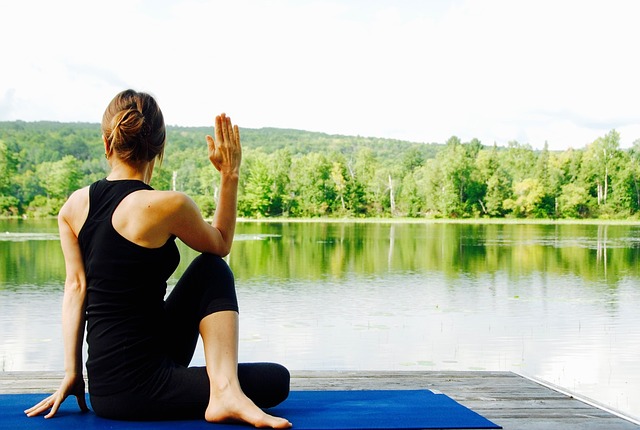Introduction to the End of Summer Mental Health Transition
As the warm days of summer start to wind down, it’s normal to feel a bit sad or anxious about the impending change of season. For some people, this feeling can be more intense and may even lead to seasonal affective disorder (SAD). If you’re struggling with the end of summer mental health transition, here are some tips to help you cope:
- Get outside every day. Enjoy the last of the summer sun by spending time outdoors every day. Go for a walk, ride your bike, or just sit in the park and soak up the rays.
- Stay active. Don’t let your fitness routine fall by the wayside as summer comes to an end. Continue to exercise regularly and stay active to boost your mood and keep your energy levels up.
- Connect with loved ones. As autumn approaches, take time to connect with loved ones near and far. Whether it’s catching up on the phone or planning a visit, quality time with those we care about is always good for our mental health.
- Make plans for fun autumn activities. Just because summer is ending doesn’t mean the fun has to stop! Start planning now for all the things you want to do in autumn, whether it’s visiting a pumpkin patch or going on a hayride. Having something to look forward to can help chase away those end-of-summer blues.
Exploring Ways to Stay Connected with Others
The leaves are falling and the air is getting chilly, which can only mean one thing: fall is here! For some people, this is their favorite time of year. The colors are changing, the pumpkin spice lattes are back, and there’s a sense of cozy comfort in the air. But for others, fall can be a difficult time. The shorter days and longer nights can lead to feelings of sadness and loneliness. If you’re struggling to adjust to the change in season, here are a few tips to help you transition into fall with positive mental health:
- Get outside: One of the best ways to beat the autumn blues is to get outside and enjoy the fresh air. Take a walk in your neighborhood or go for a hike in the woods. The exercise will boost your energy and mood, and you’ll get to appreciate all the beauty that fall has to offer.
- Stay connected: It’s important to stay connected with your friends and family as the days get shorter and colder. Schedule regular check-ins via text, phone, or video chat. Make plans for socially-distanced outdoor activities like picnics or walks together. Or simply send a handwritten letter or card to let your loved ones know you’re thinking of them.
- Be kind to yourself: Fall can be a busy time as we prepare for holidays and end-of-year deadlines at work or school.
Evaluating Your Diet for Healthy Eating Habits
As the weather cools and the leaves begin to change color, it’s a great time to take inventory of your diet and make sure it’s supporting your mental health. Here are a few things to consider:
- How well balanced is your diet? A healthy diet includes a variety of foods from all the food groups, including lean protein, healthy fats, whole grains, fruits, vegetables, and dairy. If you find that you’re eating mostly unhealthy or processed foods, it’s time to make some changes.
- Are you getting enough nutrients? Mental health requires a variety of nutrients like omega-3 fatty acids, vitamin D, magnesium, zinc, and more. Make sure you’re eating nutrient-rich foods or taking supplements if needed.
- How much sugar are you consuming? Too much sugar can lead to mood swings and energy crashes. Cut back on sugary drinks and foods and opt for healthier options like fruit or unsweetened yogurt instead.
- Are you drinking enough water? Staying hydrated is crucial for overall health, including mental health. Aim to drink eight glasses of water per day.
- Do you need to cut back on caffeine? Caffeine can cause anxiety and interfere with sleep, both of which can impact mental health negatively. If you find yourself feeling jittery or anxious after drinking caffeine, try cutting back or eliminating it altogether.
Finding Fun Activities to Try During Fall
The fall season is a great time to try new things and get out of your comfort zone. There are so many fun activities to do during this time of year, and they can help improve your mental health. Here are a few ideas:
- Go for a nature walk or hike. Fall is the perfect time to appreciate the beauty of nature. Get some fresh air and exercise while you’re at it!
- Visit a pumpkin patch or go apple picking. These are quintessential fall activities that will definitely get you into the autumn spirit.
- Make some cozy comfort food. There’s nothing better than curling up with a warm bowl of soup or stew on a cool day.
- Have a bonfire or roast marshmallows. This is a great activity to do with friends or family. It’s also really relaxing to sit by the fire and watch the flames dance.
- Go on a hayride or visit a corn maze. If you want to add a bit of excitement to your fall days, these are both great options!
Creating a Positive Environment at Home
The summer is coming to an end and for some, that can be a difficult time. The days are getting shorter, the weather is getting colder, and there is a lot less daylight. This change in season can trigger feelings of sadness, anxiety, and depression for many people. However, there are things that you can do to help make the transition into fall a positive experience. Here are some tips:
- Get outside: Take advantage of the cooler temperatures and get outside! Go for a walk, bike ride, or hike. Spend time in nature and take in the beauty of the changing leaves. Getting fresh air and exercise will help improve your mood and mental health.
- Connect with loved ones: Fall is a great time to reconnect with friends and family. Have a bonfire, go apple picking, or host a game night. Spending time with loved ones will help boost your mood and make the transition into fall feel less daunting.
- Be mindful of your diet: As the weather gets colder, we tend to crave comfort foods that are high in sugar and carbs. While it’s okay to indulge every once in awhile, try to balance it out with healthy meals as well. Eating nutritious foods will help improve your mood and energy levels.
- Practice self-care: Make sure to take care of yourself both physically and mentally this fall season. Get enough sleep, exercise regularly, eat healthy foods, and take breaks when you can.
Making Plans for the Future and Setting Goals
It’s that time of year again! The leaves are changing color, the air is getting cooler, and pumpkin spice lattes are back at Starbucks. Fall is a time of change, and for some people, that can be a difficult transition. If you’re feeling the seasonal blues, here are a few tips to help you ease into fall with positive mental health:
- Make plans for the future: One way to combat the negative feelings that can come with change is to have something to look forward to. Start planning your next vacation, set goals for the upcoming year, or make a list of things you’d like to accomplish in the next month. Having something to focus on will help you stay positive during this transitional time.
- Set goals: Another way to stay positive during a time of change is to set goals for yourself. Whether it’s quitting smoking, losing weight, or saving money, having specific targets to strive for will give you a sense of purpose and keep you motivated.
- Stay active: It’s important to stay active both physically and mentally during this season of change. Take up a new hobby, go for walks in the crisp autumn air, or sign up for a fitness class. Staying active will help boost your mood and keep your mind distracted from negative thoughts.
- Spend time with loved ones: One of the best ways to fight off the blues is to spend time with those you love. Plan fun outings with your loved ones.
Learning How To Prioritize Self Care and Self Compassion
Making the transition from summer to fall can be tough for anyone, but it can be especially difficult if you’re struggling with your mental health. The good news is that there are things you can do to ease the transition and help yourself feel better. One of the most important things you can do for your mental health is to prioritize self-care and self-compassion.
Self-care means taking care of yourself physically, emotionally, and mentally. It’s important to make time for activities that make you happy and help you relax. This could include anything from reading a book to taking a yoga class. It’s also important to eat healthy foods, get enough sleep, and exercise regularly.
Self-compassion means being kind and understanding towards yourself, even when you make mistakes or have setbacks. It’s normal to feel down sometimes, but beating yourself up about it will only make things worse. Instead, try to treat yourself with the same compassion and understanding that you would show towards a friend. Forgive yourself, move on, and focus on the positive.
By prioritizing self-care and self-compassion, you can help ease the transition into fall and set yourself up for success all season long.
Conclusion
As the fall season approaches, it’s important to remember that there are many ways to transition into this new season with a positive mindset. Whether you take part in nature-based activities, practice self-care habits or even try different mindfulness techniques – each of these ideas can help you adjust and adapt to the changing of seasons while keeping your mental health in check. With just a few simple additions to your daily routine, you can ensure that autumn is filled with growth and positivity!









